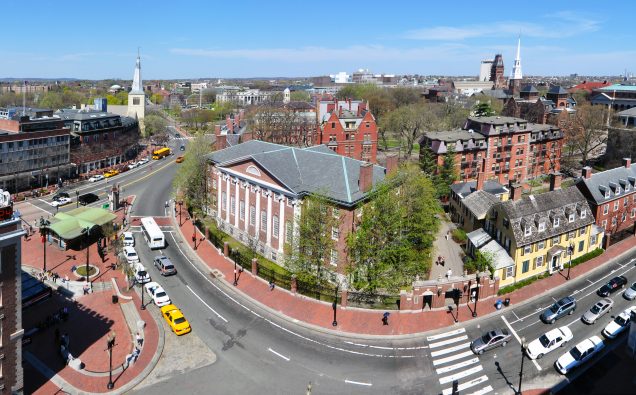
Harvard Square Harvard Yard Photo: User:Chensiyuan/Wikimedia Commons
The United States has long prided itself on hosting some of the world’s top institutions of higher learning that attract talent from around the world.
But the 2008 year of recession gave a big boost to enrollment of international students.
Between 2008 and 2016, the number of foreign students enrolled at American colleges and universities soared 104 %, bringing in diversity and economic activity worth billions of dollars.
More institutions opened up to international students during the years of recession.
According to a Pew Research analysis, the rise in the number of students was “most pronounced at public colleges and universities, which faced budget cuts during the Great Recession and began to rely more heavily on tuition from foreign students.”
In 2016 alone, 364,000 foreign students with F-1 visas were newly enrolled at a U.S. college or university in 2016, double the number at the outset of the Great Recession, the Pew Research Center noted in an analysis of U.S. Immigration and Customs Enforcement data it obtained through a public records request.
From 2008 to 2016, the number of new foreign students at U.S. colleges and universities far outpaced overall college enrollment growth, which was 3.4% during the same period, according to U.S. Census Bureau data.
The years before the recession present a much smaller growth, as the number of students at the American institutions of higher learning increased by 20% from 2004 to 2007, but still outpaced overall U.S. enrollment, which rose 7.2% over the same period, according to the Pew analysis.
The Pew notes on its website that enrollments among new foreign students at public higher education institutions grew 107% from 2008 (100,956 students) to 2016 (209,217 students) while at private institutions, the enrollments saw a 98% increase in new foreign students, from 72,953 in 2008 to 144,697 in 2016.
The arrival of new students generated a lot of economic activity, with estimated spending by new foreign students at U.S. higher education institutions rocketing by about 184% from 2008 to 2016.
![Photo By Lucas Cantor (Georgetown Day - 17) [CC BY 2.0 (http://creativecommons.org/licenses/by/2.0)], via Wikimedia Commons](https://www.viewsnews.net/wp-content/uploads/2016/04/Georgetown_Day-1024x677.jpg)
Photo By Lucas Cantor (Georgetown Day – 17) [CC BY 2.0 (http://creativecommons.org/licenses/by/2.0)], via Wikimedia Commons
The spending by foreign students saw a huge increase at public universities,by nearly 214% from 2008 ($2.5 billion) to 2016 ($7.8 billion).
In terms of diversity, students from China, India and South Korea accounted for more than half (54%) of all new foreign students pursuing degrees in the U.S. in 2016.
According to Pew, a total of 108,000 new students were from China, accounting for 30% of the total number while 66,000 came from India (18% of the total), and around 21,000 from South Korea (6% of the total).
Among states California, New York, Texas, Massachusetts, Pennsylvania, Illinois, Florida, Ohio, Michigan and Washington attracted 63% of newly enrolled foreign students in 2016.














